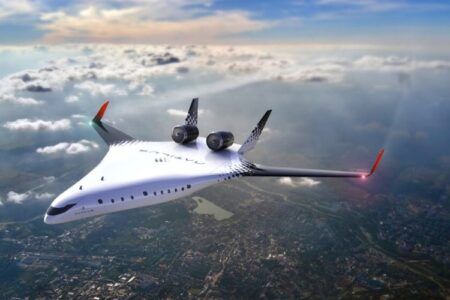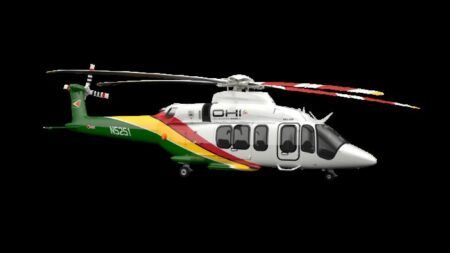In preparation for the arrival of the new KC-46 Pegasus aerial refueler, the 418th Flight Test Squadron at Edwards Air Force Base has recently carried out legacy tanker fuel surge testing (conducted July 26 through August 9). Both the KC-135 and the KC-10 were tested successively on the ground to baseline surge pressure environments.
The same test will be conducted upon the arrival of the Boeing KC-46 to determine what its surge environments will look like in flight based on comparisons with legacy platforms.
“We know that the KC-10 and KC-135 don’t cause damage to the receivers in-flight during refueling. Therefore, with successful test data, we can deduce that the KC-46 should have no greater risk of causing damage in flight than any legacy platform we have in place right now,” said Justin Almeleh, 418th FLTS, aerial refueling flight test engineer.
The test was a risk-reduction effort designed to eliminate the need to instrument receiver fuel systems in flight. The instrumentation required to test in-flight would have been very costly, technically challenging and difficult to schedule.
Instead, the ground test is conducted using a Boeing tool that is a combination of a boom test unit that connects to a surge test tool. The surge test tool in essence is a multi-pronged flow diverter that simulates a variety of fuel receiver classes seen in different airplanes.
Using that setup, fuel was sent through the boom of each aircraft and stabilized at a specific flow rate in each given line. Then, they deliberately generated surge pressures in the fuel lines to determine the maximum surge pressure a receiver would see in-flight behind a KC-10 and KC-135.
With the use of different sized fuel lines and varying valve closure rates, the test team was able to simulate everything from a light and fast fighter airplane receiver, to a heavy, slow cargo-type receiver.
While the purpose of the test was not to simulate the flight conditions, they used the same pressures, loads and pump conditions that aerial refueling systems would use in flight. In the aircraft there was a full air crew, including a test conductor, discipline engineer, boom operator, pilot, and in the case of the KC-10, a flight engineer.
According to Almeleh, there were 97 people involved in the test from more than 10 shops on base, including 418th Flight Test Squadron, 370th Flight Test Squadron, Petroleum Oils and Lubricants, AGE Flight, Special Instrumentation, the 412th Maintenance Squadron, fire department, 412th Civil Engineering Group, NASA, and the Air Drop shop.
“It was a huge choreographed opera of support equipment with Aerospace Ground Equipment and maintenance teams and hydraulic mules,” said Robert Schlein, 418th FLTS, flight test engineer.
They also received logistical support from Scott Air Force Base, Illinois; maintainers from Travis AFB, California; air crew support from Air Force Reserve Command; and 10 Boeing employees from Seattle. At any given time, there were at least 16 different pieces of ground equipment being used for the test.
All of that was done at night, due to heat restrictions.
By the end of the test, the KC-135 offloaded 500,000 lb of fuel over four nights and the KC-10 offloaded 715,000 lb of fuel over two nights. In all, 1,215,000 lb of fuel were offloaded between the two aircraft over six nights.
For now, the KC-46 is being tested by the 412th Test Wing at Boeing Field in Seattle, Washington. According to Almeleh, the KC-46 will arrive at Edwards in stages, starting with specific test events. At some point, two KC-46s will be stationed at Edwards for 1-2 years while they conduct aerial refueling certification.
The KC-46 Pegasus development program completed its first flight of Engineering and Manufacturing Development aircraft (EMD-1) on December 28, 2014, from Paine Field in Everett, Washington, to Boeing Field in Seattle.
EMD-1 is a provisioned 767-2C freighter and the critical building block for the KC-46 missionized aerial refueler.
“One of the biggest changes between the legacy platforms and the KC-46 is that there was a complete remake of how the boom is controlled,” said Schlein.
The boom operators will no longer rely on a window view in the back of the aircraft. Instead, there is an air refueling operator’s station behind the cockpit that uses video cameras, panoramic and 3D cameras to provide a 3D picture of the back, which is a “revolutionary change”.
“The situational awareness that they have is significantly increased because they now have the ability to see over a 180° view using these panoramic cameras,” said Almeleh. “Special glasses, along with the remote vision system, allow [the boom operator] to see depth perception in three dimensions of the aircraft while he’s making contact [with the receiver].”
The Pegasus is also equipped with infrared cameras, allowing for night vision refueling for the first time by a USAF tanker.
The new equipment is expected to increase usability and functionality of the system during an “inherently dangerous” operation.
The Air Force contracted with Boeing in February 2011 to acquire 179 KC-46 refueling tankers to begin recapitalizing the aging tanker fleet. The surge testing was an early but important step toward meeting the required assets available date – a milestone requiring 18 KC-46 aircraft and all necessary support equipment to be on the ramp, ready to support warfighter needs by August 2017.
“The support and knowledge that Edwards has is unbelievable,” said Almeleh. “The ability for us to execute our tests as effectively and quickly as we did was made possible only by the incredible support of those squadrons that helped.”
August 26, 2015




